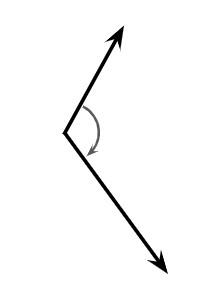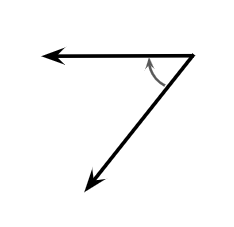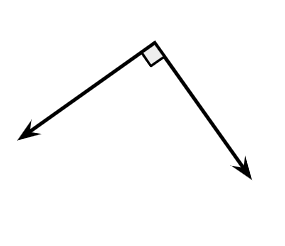Describe rotations using the standard unit of degrees when compared to a right angle
I can describe rotations using the standard unit of degrees when compared to a right angle.
Describe rotations using the standard unit of degrees when compared to a right angle
I can describe rotations using the standard unit of degrees when compared to a right angle.
These resources will be removed by end of Summer Term 2025.
Lesson details
Key learning points
- Some objects rotate or spin and this is measured in degrees
- Rotation can be more than a right angle >90 degrees
- Rotation can be less than a right angle <90 degrees
Keywords
Degrees - A degree is a unit of measure for angles.
Estimate - To estimate is to find a value that is close enough to the right answer, usually with some thought or calculation involved.
Rotation - A rotation is a circular movement around a fixed point.
Common misconception
Objects rotate only either less than a full turn or more than a full turn.
Take time to discuss the purpose of the object in question and clarify the difference between what an object should do and could do.
To help you plan your year 5 maths lesson on: Describe rotations using the standard unit of degrees when compared to a right angle, download all teaching resources for free and adapt to suit your pupils' needs...
To help you plan your year 5 maths lesson on: Describe rotations using the standard unit of degrees when compared to a right angle, download all teaching resources for free and adapt to suit your pupils' needs.
The starter quiz will activate and check your pupils' prior knowledge, with versions available both with and without answers in PDF format.
We use learning cycles to break down learning into key concepts or ideas linked to the learning outcome. Each learning cycle features explanations with checks for understanding and practice tasks with feedback. All of this is found in our slide decks, ready for you to download and edit. The practice tasks are also available as printable worksheets and some lessons have additional materials with extra material you might need for teaching the lesson.
The assessment exit quiz will test your pupils' understanding of the key learning points.
Our video is a tool for planning, showing how other teachers might teach the lesson, offering helpful tips, modelled explanations and inspiration for your own delivery in the classroom. Plus, you can set it as homework or revision for pupils and keep their learning on track by sharing an online pupil version of this lesson.
Explore more key stage 2 maths lessons from the Angles: compare, name, estimate and measure angles unit, dive into the full secondary maths curriculum, or learn more about lesson planning.

Licence
Starter quiz
6 Questions








Exit quiz
6 Questions







